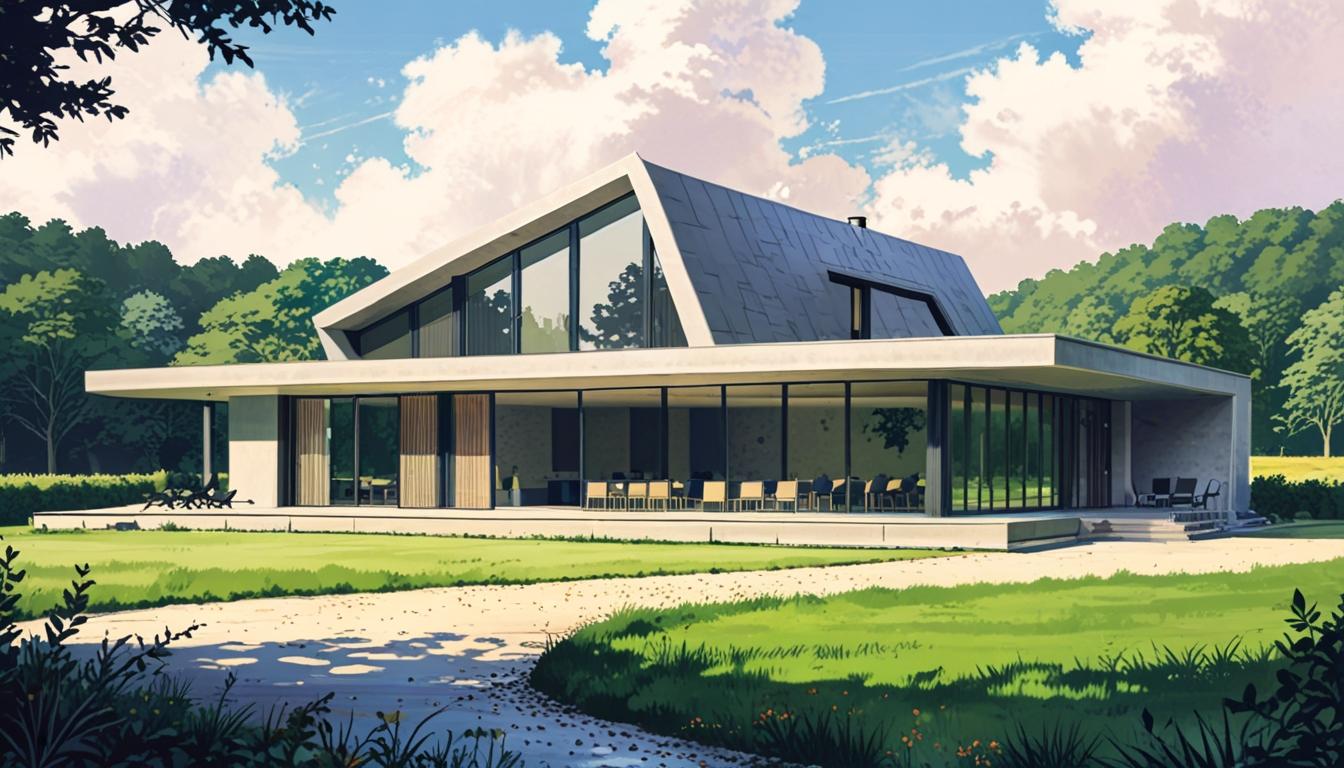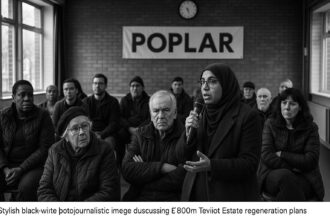The ‘Grand Designs’ planning exemption under Paragraph 84 of the National Planning Policy Framework allows for architecturally exceptional modern homes to be built in traditionally protected rural areas, such as Gloucestershire’s AONBs. These unique houses, often showcased on television, blend innovative design with strict environmental and aesthetic criteria, reflecting a shift towards contemporary country estates.
In the picturesque Gloucestershire countryside, a niche planning exemption known as the ‘Grand Designs’ clause is enabling the construction of architecturally exceptional modern mansions amidst areas traditionally protected from development. This exemption falls under Paragraph 84 of the National Planning Policy Framework (NPPF) and permits unique rural dwellings on the condition that they demonstrate “exceptional quality.”
While initially designed to uphold the tradition of classic English country estates, the policy has evolved in recent years to accommodate contemporary architectural interpretations, often resulting in sleek, avant-garde homes with substantial price tags. These innovative properties frequently feature on programmes such as Channel 4’s Grand Designs and are notably emerging within Areas of Outstanding Natural Beauty (AONB), where stringent building restrictions typically limit development.
One prominent example of such an exclusive dwelling is Headlands, located in the Cotswold AONB near Prestbury, Cheltenham. Completed in 2018, Headlands is distinguished by its leaf-shaped zinc roof and cutting-edge interiors, earning acclaim as one of Britain’s most extraordinary homes that exemplify the exacting standards required by Paragraph 84’s “exceptional” design clause.
Another noteworthy project is Swinhay House, situated near Wotton-under-Edge in Gloucestershire. This striking residence, with its bold curved architecture and iconic observatory tower, gained national recognition after featuring in the series three finale of the BBC drama Sherlock, where it served as the home of the character Charles Augustus Magnussen.
Richard Hawkes, director and founder of Hawkes Architecture – a firm acclaimed as the leading specialist in Paragraph 84 homes – has overseen 36 such schemes, including Headlands, more than any other architectural practice nationwide. Speaking about the policy’s origins and evolution to Gloucestershire Live, Richard explained: “The policy is 28 years old. It was all about continuing the tradition of the English country house, because it’s quintessentially English to have these types of home.” He added that in the early 2000s it transitioned to favour a “more contemporary interpretation” and that the planning exemptions are now widely referenced as “Paragraph 84 homes.”
Richard also highlighted a symbiotic relationship between these kinds of developments and the Grand Designs television programme. “Grand Designs has become a bit of a flag bearer for the policy – it’s almost a symbiotic relationship with the programme,” he said.
Projects under Paragraph 84 are subject to a highly rigorous planning process, requiring any new build to be “truly outstanding, reflecting the highest standards in architecture” and to “significantly enhance its immediate setting” while being sensitive to the local area’s defining characteristics. The financial commitment is significant; even the planning application phase commonly costs upwards of £100,000, with entire developments often running into millions depending on size and complexity.
Richard emphasised the necessity for such homes to be unapologetically exceptional: “Any paragraph 84 has to be, by definition, high quality and meet the defining criteria. These homes shouldn’t need to hide – or apologise for being there – because they are outstanding and exceptional.” He acknowledged the considerable challenge in selecting suitable sites, citing the extensive surveys and reports necessary for compliance.
Further notable examples include Bigbury Hollow near Kent’s Bigbury Camp Iron Age hill fort, which features extensive terraced courtyards and subterranean wings. Valued at around £1.5 million, Bigbury Hollow was showcased on the 23rd series of Grand Designs in an episode titled “Canterbury 2022.” Host Kevin McCloud described the home as “like a concrete submarine which has breached the surface of a wildflower meadow and come up for air.”
Another distinctive house is the Lake House, located within 40 acres of the High Weald National Landscape in East Sussex. This property draws inspiration from an adjacent disused railway line, incorporating three carriage-like structures nestled amongst trees.
Rob Hughes, director of the planning consultancy Hughes Planning who works closely with Hawkes Architecture on Paragraph 84 projects, underlined the importance of expert guidance in identifying suitable plots. He stated: “Not every site will be able to accommodate a Para 84 home so it’s important that people seek out professional advice, someone with the right expertise, as it really is a niche.” He described the necessity of assembling multidisciplinary teams including landscape architects, ecologists, hydrogeologists, and sustainability experts to navigate the complex planning requirements.
Addressing the frequent reasons planning applications fail, Rob identified three main challenges: the project failing to significantly enhance the area, not aligning with the local area’s defining characteristics, or simply not being “outstanding enough.”
Despite the exclusivity and complexity of Paragraph 84 homes, Richard Hawkes noted some misunderstandings among local populations regarding such projects. “We get some communities who are very supportive and the parish councils saying it’s forward-thinking, but more often than not there is nimbyism to the proposals. But if we’ve done our job properly we should have covered all those planning aspects related to the sensitivities of the area,” he explained.
Rob Hughes added: “Some members of the public don’t like the idea but really there’s a requirement for the homes to be isolated so it’s not really going to affect them.”
Together, these perspectives shed light on how the Paragraph 84 planning exemption continues to facilitate the construction of extraordinary rural dwellings that blend high architectural standards with sensitive environmental considerations across the English countryside.
Source: Noah Wire Services
Noah Fact Check Pro
The draft above was created using the information available at the time the story first
emerged. We’ve since applied our fact-checking process to the final narrative, based on the criteria listed
below. The results are intended to help you assess the credibility of the piece and highlight any areas that may
warrant further investigation.
Freshness check
Score:
8
Notes:
The content mentions specific projects and timelines, such as Headlands completed in 2018 and Bigbury Hollow featured in 2022. There are no obvious indications of being outdated, though the policy itself is older.
Quotes check
Score:
7
Notes:
Direct quotes are provided from Richard Hawkes and Rob Hughes. While the quotes seem original in this context, there’s no clear way to verify if they’ve been used elsewhere without further research.
Source reliability
Score:
8
Notes:
The narrative originates from Gloucestershire Live, a local news outlet that may not be globally recognized but is a reputable source for local information.
Plausability check
Score:
9
Notes:
Claims about Paragraph 84 homes are plausible given the specific examples and descriptions. The narrative aligns well with the concept of exceptional architectural designs in rural areas.
Overall assessment
Verdict (FAIL, OPEN, PASS): PASS
Confidence (LOW, MEDIUM, HIGH): HIGH
Summary:
The narrative appears to be well-researched and accurate, with good support from specific examples and quotes from experts in the field. The lack of outdated references further enhances credibility.













